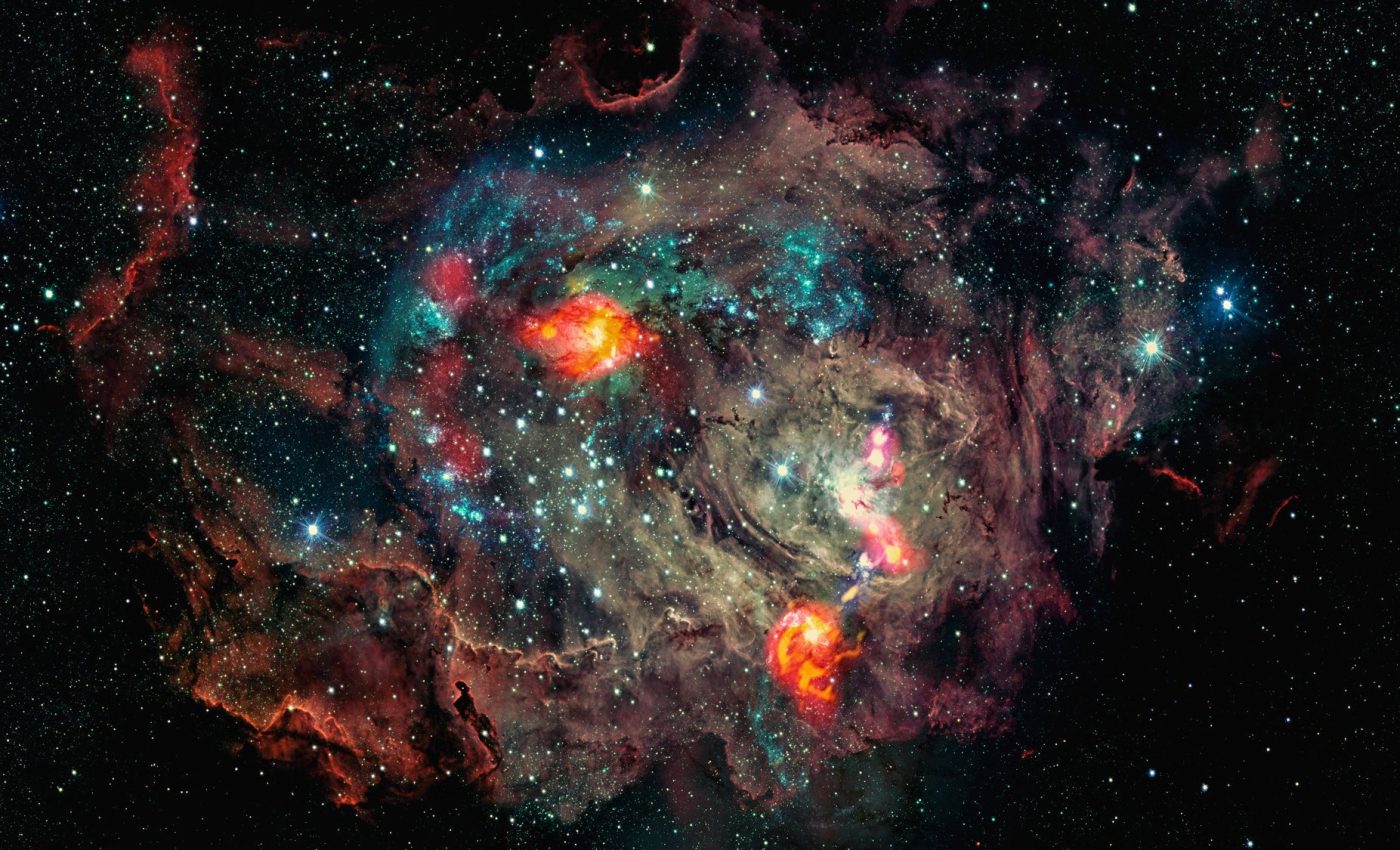
Black holes are not the secret source of dark matter
Gravitational wave detectors LIGO and Virgo have detected a population of massive black holes, whose origin remains one of the biggest mysteries in modern astronomy. According to one hypothesis, these black holes may have formed in the early universe and could compose dark matter.
However, a team of scientists from the OGLE survey at the Astronomical Observatory of the University of Warsaw has found that such massive black holes can comprise at most a few percent of dark matter.
This discovery suggests that other explanations are needed for the sources of gravitational waves detected by LIGO and Virgo.
The results of the study are published in two articles – one in Nature and the other in The Astrophysical Journal Supplement Series.
Mysterious nature of dark matter
Astronomical observations indicate that ordinary matter, which we can see or touch, constitutes only 5% of the universe’s total mass and energy.
For every kilogram of ordinary matter in the Milky Way, there are 15 kilograms of “dark matter,” which does not emit light and interacts only through gravity.
“The nature of dark matter remains a mystery. Most scientists think it is composed of unknown elementary particles,” said Przemek Mróz, an astronomer at the University of Warsaw. Despite extensive research efforts, no experiment has yet identified particles that could account for dark matter.
Black holes in the early universe
Since the first detection of gravitational waves from a merging pair of black holes in 2015, LIGO and Virgo have identified over 90 such events.
Intriguingly, the black holes detected by these experiments are significantly more massive (20-100 solar masses) than those previously known in the Milky Way (5-20 solar masses).
“Explaining why these two populations of black holes are so different is one of the biggest mysteries of modern astronomy,” Mróz said.
One theory suggests that LIGO and Virgo have uncovered a population of primordial black holes, possibly formed in the early universe. This idea was first proposed over 50 years ago by Stephen Hawking and Yakov Zeldovich.
“We know that the early universe was not ideally homogeneous – small density fluctuations gave rise to current galaxies and galaxy clusters,” Mróz explained. These density fluctuations could collapse and form black holes if they exceed a critical density.
Black holes and dark matter
Increasingly more scientists have speculated that such primordial black holes could constitute a significant fraction of dark matter.
Fortunately, this hypothesis can be tested through astronomical observations. If dark matter in the Milky Way were composed of black holes, we should be able to detect them despite their lack of light emissions.
This is possible through gravitational microlensing, a phenomenon predicted by Einstein’s theory of general relativity, where light is bent and deflected by the gravitational field of massive objects.
“Microlensing occurs when three objects – an observer on Earth, a source of light, and a lens – virtually ideally align in space,” said Andrzej Udalski, the principal investigator of the OGLE survey.
Microlensing events
During a microlensing event, the source’s light is deflected and magnified, resulting in a temporary brightening.
The duration of this brightening depends on the mass of the lensing object. Microlensing events caused by solar mass objects typically last several weeks, while those caused by black holes 100 times more massive than the Sun could last several years.
The idea of using microlensing to study dark matter dates back to the 1980s, and was proposed by Polish astrophysicist Bohdan Paczyński. This inspired the start of three major experiments: the Polish OGLE, the American MACHO, and the French EROS.
The new study in the Astrophysical Journal Supplement Series presents the results of nearly 20 years of photometric monitoring of almost 80 million stars in the Large Magellanic Cloud.
“This data set provides the longest, largest, and most accurate photometric observations of stars in the Large Magellanic Cloud in the history of modern astronomy,” Udalski said.
Black holes cannot account for dark matter
If all dark matter in the Milky Way were composed of black holes with 10 solar masses, 258 microlensing events should have been detected. For black holes with 100 solar masses, 99 events would be expected, and for 1,000 solar masses, 27 events.
However, OGLE astronomers found only 13 microlensing events. Detailed analysis suggests these can be explained by known stellar populations rather than black holes.
“That indicates that massive black holes can compose at most a few percent of dark matter,” Mróz said. Specifically, black holes of 10 solar masses may comprise at most 1.2% of dark matter, 100 solar mass black holes up to 3.0%, and 1,000 solar mass black holes up to 11%.
An enduring mystery
“Our observations indicate that primordial black holes cannot comprise a significant fraction of the dark matter and, simultaneously, explain the observed black hole merger rates measured by LIGO and Virgo,” Udalski said.
Other explanations for the massive black holes detected by LIGO and Virgo include their formation from the evolution of massive, low-metallicity stars or from mergers of less massive objects in dense stellar environments. “Our results will remain in astronomy textbooks for decades to come,” he concluded.
—–
Like what you read? Subscribe to our newsletter for engaging articles, exclusive content, and the latest updates.
Check us out on EarthSnap, a free app brought to you by Eric Ralls and Earth.com.
—–













